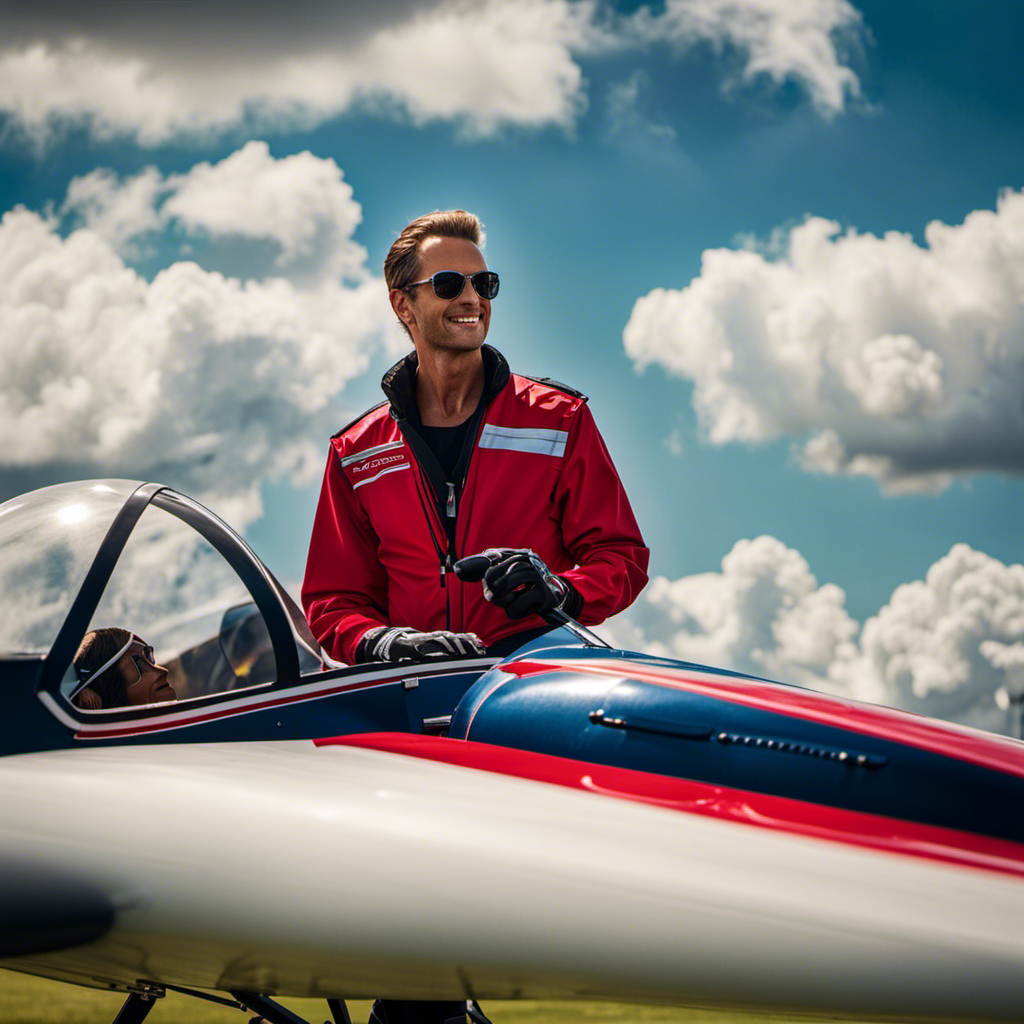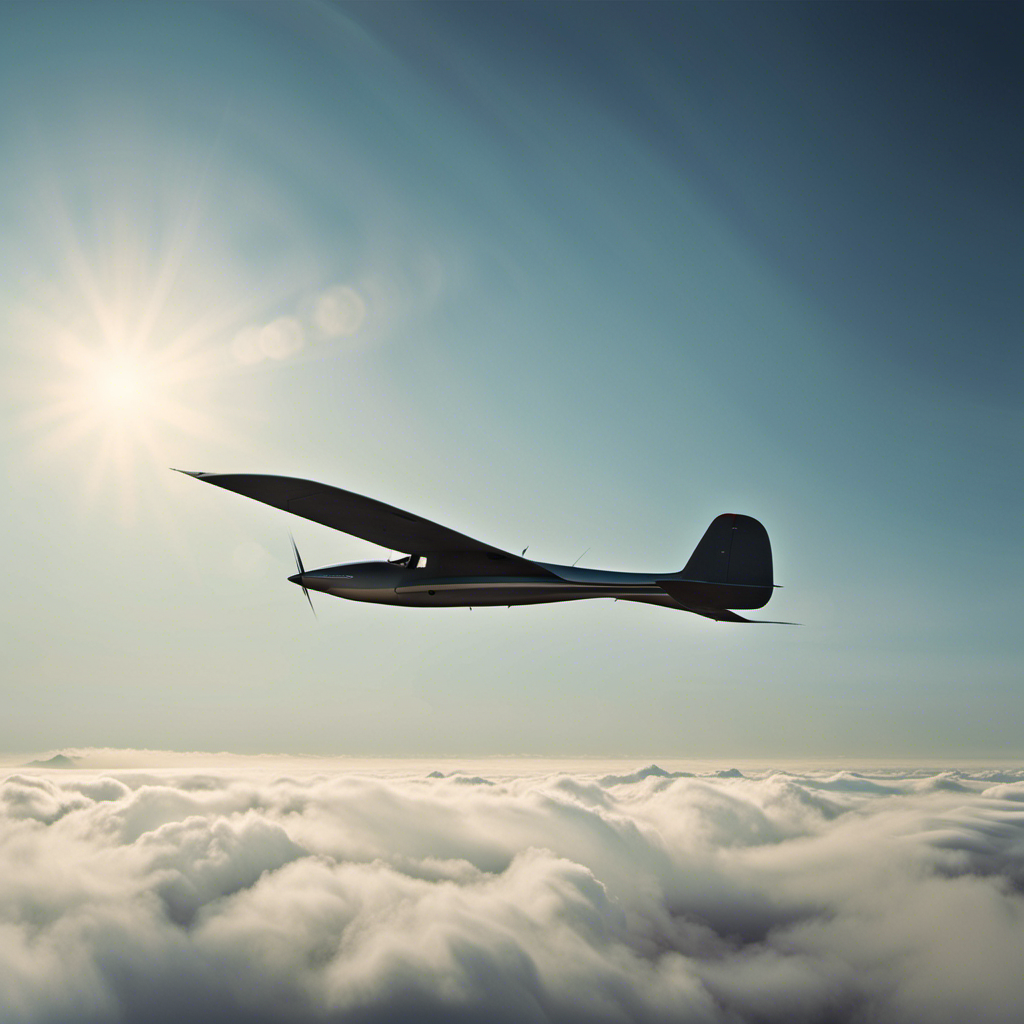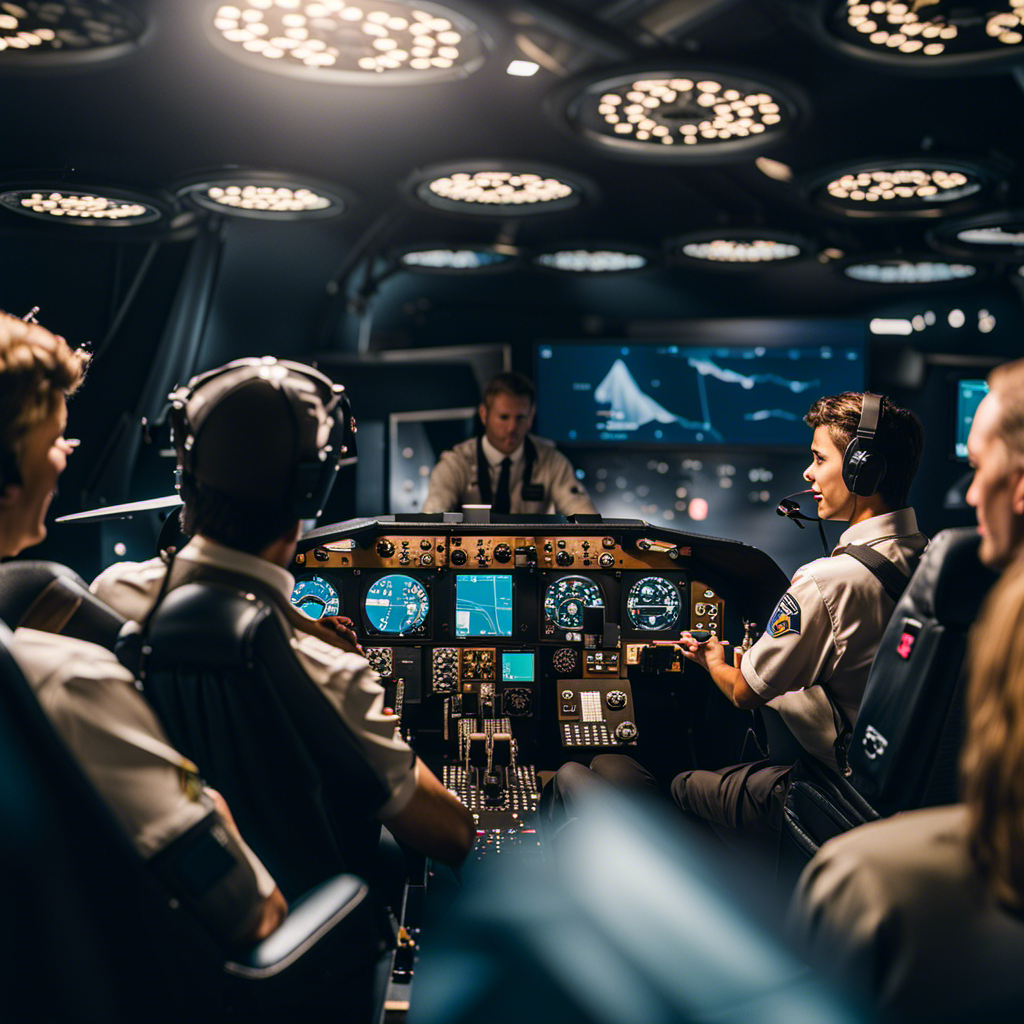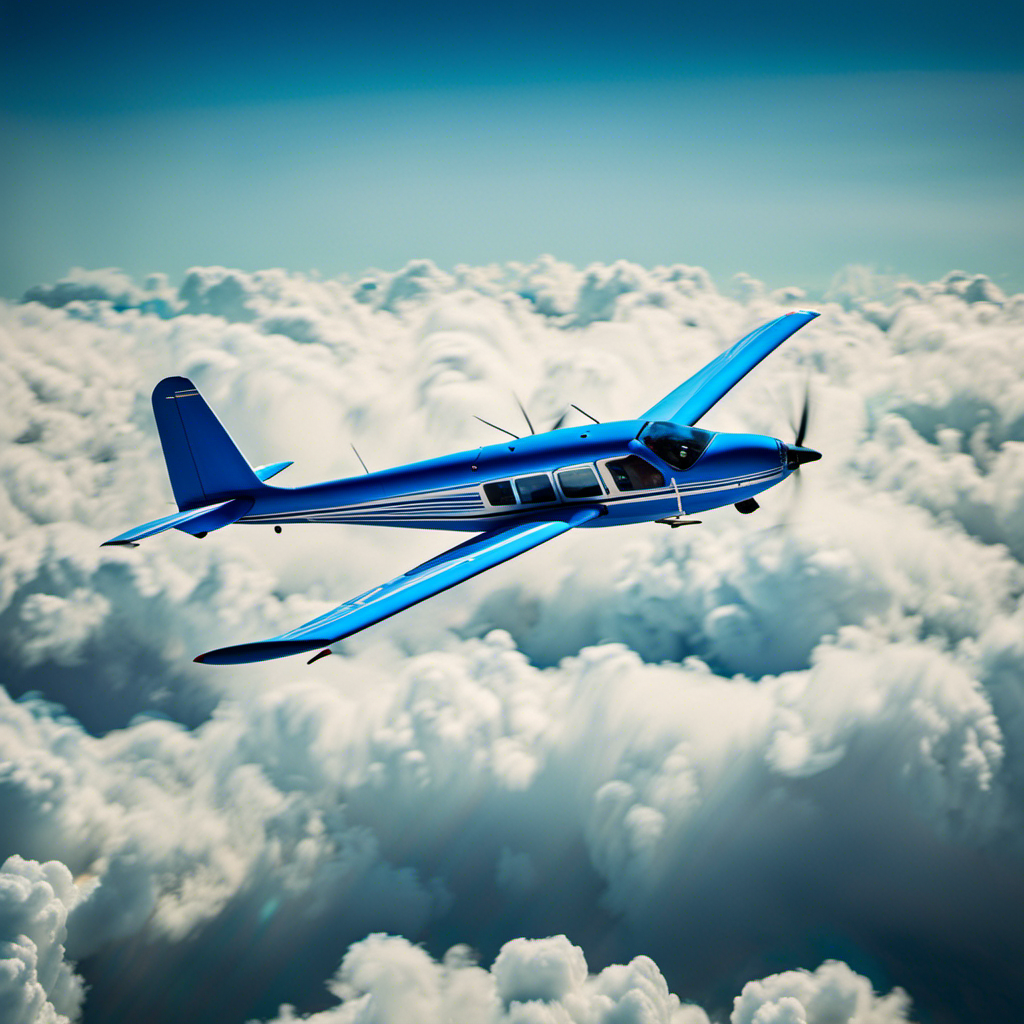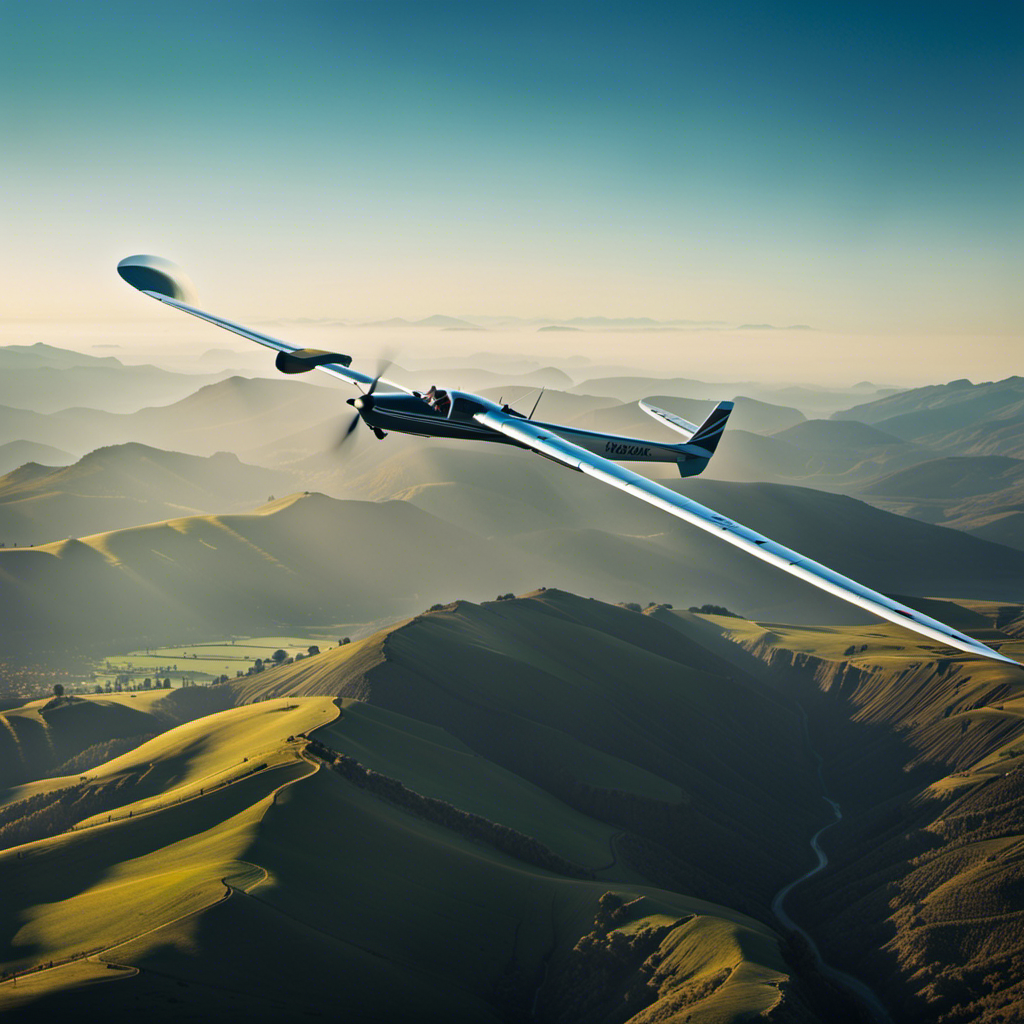Being a part of a gliding club is like spreading my wings and soaring up in the sky. It’s an exhilarating experience that gives me a feeling of freedom and joy.
In this article, I will guide you through the process of joining a gliding club, from understanding the basics to embracing the gliding community.
By attending training courses, participating in competitions, and volunteering for responsibilities, you’ll not only learn the rules and regulations of gliding but also make new friends along the way.
Get ready to embrace the thrill and freedom of gliding!
Key Takeaways
- Joining a gliding club provides access to gliders, expert guidance, and a supportive community.
- Attending introductory sessions and training courses helps familiarize oneself with the gliding community and gain necessary flying skills.
- Participating in solo flights allows for building confidence, gaining experience, and increasing proficiency in gliding.
- Understanding the rules, regulations, and safety measures of gliding is crucial to ensure a safe and secure gliding experience.
Understand the Basics of Gliding
To understand the basics of gliding, you’ll need to learn about lift, drag, and how to control the aircraft. Mastering glider controls is essential for a safe and enjoyable gliding experience.
The controls include the stick, rudder pedals, and airbrakes. The stick is used for pitch control, allowing you to raise or lower the nose of the glider. Rudder pedals control the yaw, allowing you to turn left or right. Airbrakes are used to increase drag and decrease the glider’s speed.
Safety measures in gliding are crucial to ensure a successful flight. These include checking the weather conditions, inspecting the glider before each flight, and following proper procedures during takeoff, landing, and in-flight.
Understanding these fundamentals will lay a solid foundation for your gliding journey. Now, let’s dive into researching and finding a gliding club near you.
Research and Find a Gliding Club Near You
Before you start researching and finding a gliding club near you, it’s important to consider your location and the availability of clubs in your area. Joining a gliding club offers numerous benefits, such as access to gliders and equipment, expert guidance from experienced pilots, and a supportive community of fellow gliding enthusiasts. Additionally, being a member of a club allows you to explore different gliding locations, from scenic coastal areas to breathtaking mountain ranges. To help you find the right club, here is a table showcasing some popular gliding clubs in different regions:
| Region | Gliding Club |
|---|---|
| East Coast | Coastal Gliders Club |
| Midwest | Heartland Soaring Club |
| West Coast | Pacific Soaring Club |
| Southwest | Desert Sky Gliders |
| Southeast | Sunshine Gliding Club |
Once you have identified a club that interests you, reaching out to them and inquiring about membership is the next logical step.
Contact the Club and Inquire about Membership
After you’ve found a gliding club that interests you, the next step is to contact them and ask about joining. Most gliding clubs have specific requirements for joining, which may include age restrictions, physical fitness, and completion of a medical examination. Some clubs may also require a certain level of experience or training before becoming a member. It is important to inquire about these joining requirements to ensure that you meet the necessary criteria.
In addition to the joining requirements, it is also beneficial to inquire about the membership benefits. These may include access to gliders and equipment, discounted rates for training courses, and the opportunity to participate in club events and competitions. By contacting the club and asking about membership, you can gather all the necessary information to make an informed decision about joining.
Once you have joined the gliding club, the next step is to attend introductory sessions and training courses.
Attend Introductory Sessions and Training Courses
Attending introductory sessions and training courses is a great way to familiarize yourself with the gliding community and gain the necessary skills for flying. These sessions and courses are typically offered by gliding clubs and provide a structured environment for beginners to learn the basics of gliding.
During these sessions, you will have the opportunity to find instructors who can guide you through the learning process and teach you the necessary techniques and maneuvers for safe gliding. In addition, these sessions often include practical exercises where you can practice maneuvers under the supervision of experienced instructors.
By participating in these sessions and courses, you can quickly develop your skills and confidence in gliding.
Now that you have a solid foundation, it’s time to move on to learning the rules and regulations of gliding.
Learn the Rules and Regulations of Gliding
Learning the rules and regulations of gliding is essential for ensuring the safety of yourself and others in the gliding community. Understanding safety precautions is crucial to minimize the risks associated with this exhilarating sport.
Gliding involves flying unpowered aircraft, so it’s important to be knowledgeable about airspace restrictions, weather conditions, and emergency procedures. Each gliding club may have its own set of specific rules, which should be followed meticulously.
Additionally, exploring different gliding locations allows you to become familiar with various terrains and weather patterns. This knowledge will help you make informed decisions during your flights.
Obtain a Medical Certificate and Pilot License (if required)
Obtaining a medical certificate and pilot license is necessary to participate in gliding. Before I could take to the skies in a glider, I had to go through the process of getting these important credentials.
The medical certificate ensures that I am physically fit to fly and that I do not have any conditions that could endanger myself or others. To obtain this certificate, I had to undergo a thorough medical examination performed by an aviation medical examiner.
Additionally, I had to complete the necessary pilot training, which involved both theoretical and practical components. This training covered topics such as aerodynamics, weather patterns, navigation, and emergency procedures.
Once I had successfully obtained my medical certificate and pilot license, I was ready to take the next step in my gliding journey: purchasing or renting gliding equipment.
Purchase or Rent Gliding Equipment
After securing my medical certificate and pilot license, I’m now ready to start looking into buying or renting gliding equipment. Gliding equipment is essential for a safe and enjoyable flying experience.
Here are some options to consider:
-
Purchasing a glider: Buying your own glider gives you the freedom to fly whenever you want. However, it can be a significant investment.
-
Leasing a glider: If you’re not ready to commit to buying a glider, leasing can be a more cost-effective option. Many gliding clubs offer lease programs.
-
Renting equipment: Some gliding clubs have gliders available for rent on a per-flight basis. This can be a good option if you only plan to fly occasionally.
-
Buying used equipment: Consider purchasing used gliding equipment to save money. Just ensure that it is in good condition and meets safety standards.
-
Equipment maintenance: Remember to factor in the cost of maintaining and storing your gliding equipment.
With gliding equipment sorted, I can now participate in solo flights and gain valuable experience.
Participate in Solo Flights and Gain Experience
Now that you’ve got your own gliding equipment, it’s time to take to the skies and participate in solo flights to gain valuable experience.
Solo flight experiences are crucial in building confidence in gliding. During these flights, you will have the opportunity to apply the skills you’ve learned and navigate the skies on your own.
It may feel exhilarating and slightly nerve-wracking at first, but with each flight, you will become more comfortable and adept at handling different situations. Pay attention to the weather conditions, practice your maneuvers, and make notes of any challenges you face.
These solo flights will not only enhance your piloting skills but also help you understand the nuances of gliding. As you gain more experience, you’ll be ready to join club activities and events where you can further hone your skills and meet fellow gliding enthusiasts.
Join Club Activities and Events
Once you’ve joined the club, you’ll have the opportunity to participate in various activities and events. Being a part of a gliding club is not just about flying solo, but also about connecting with fellow gliders and immersing yourself in the community.
Here are three exciting aspects of club life that you can look forward to:
-
Club Socials: These gatherings provide a chance to meet and socialize with other members who share your passion for gliding. From casual barbecues to themed parties, club socials foster a sense of camaraderie and friendship among gliders.
-
Annual Events: Gliding clubs often organize special events throughout the year. These can include cross-country races, aerobatic competitions, or even airshows. Such events offer opportunities to showcase your skills, learn from others, and enjoy the thrill of gliding in a competitive setting.
-
Workshops and Seminars: Many clubs organize workshops and seminars led by experienced gliders. These sessions cover a wide range of topics, from advanced flying techniques to aircraft maintenance. Attending these educational events allows you to connect with experienced gliders and learn from their expertise.
Connect with Experienced Gliders and Learn from Them
Immerse yourself in the gliding community by connecting with experienced gliders and learning from their expertise.
One of the best ways to enhance your skills and knowledge in gliding is by finding mentors who can guide you along the way. These experienced gliders can provide valuable insights, tips, and tricks that can help you become a better glider. Connect with them through your local gliding club or online forums dedicated to gliding.
Additionally, attending workshops and seminars conducted by these experts can further expand your understanding of gliding techniques, safety procedures, and maintenance practices. By actively seeking out mentors and attending workshops, you can tap into a wealth of knowledge and experience that will accelerate your growth as a glider.
Transitioning into the next section, it is important to consider advanced training and certification to further enhance your skills.
Consider Advanced Training and Certification
You should seriously consider pursuing advanced training and certification to take your gliding skills to the next level. By undergoing advanced training, you will have the opportunity to learn new techniques and expand your knowledge in gliding. Additionally, obtaining certification will not only validate your skills but also open up a whole new world of opportunities. Here are some advanced training opportunities and certification requirements you should be aware of:
| Advanced Training Opportunities | Certification Requirements |
|---|---|
| Cross-country flying techniques | Minimum flight hours |
| Aerobatics training | Written and practical exams |
| Mountain soaring lessons | Safety and emergency procedures |
| Glider maintenance workshops | Proficiency in radio communication |
Pursuing advanced training and certification will not only enhance your skills but also give you a sense of accomplishment. So, take the leap and embrace the gliding community, where you can make new friends who share the same passion for this exhilarating sport.
Embrace the Gliding Community and Make New Friends
After completing advanced training and earning my certification, I was eager to fully immerse myself in the gliding community. Becoming a member of a gliding club provided me with the opportunity to embrace this community and make new friends who shared my passion for soaring through the skies.
Building lasting friendships within the gliding community is essential for not only finding camaraderie, but also for building a strong support network. Through my experiences at the club, I have discovered the following:
- Shared Experiences: Bonding over shared experiences and challenges creates a deeper connection with fellow club members.
- Mentorship: Seasoned gliders within the club offer valuable guidance and support to newer members.
- Social Events: Club-hosted social events, such as barbecues and gatherings, provide a relaxed environment for members to interact and forge meaningful connections.
By actively engaging with the gliding community, I have found a sense of belonging and support that enhances my overall gliding experience.
Transitioning into the subsequent section, it is crucial to not only embrace the gliding community but also to take part in competitions and challenges.
Take Part in Competitions and Challenges
Participating in competitions and challenges allows gliders to showcase their skills and push themselves to new heights. Gliding competitions provide an opportunity for pilots to demonstrate their expertise in various tasks, such as navigation, precision flying, and speed. These events are not only thrilling but also a great way to gain recognition within the gliding community.
Gliding challenges, on the other hand, offer a chance to test one’s abilities in different weather conditions and terrain. They often involve long-distance flights or specific goals to achieve. These competitions and challenges foster healthy competition, encourage skill development, and inspire gliders to continuously improve.
Contribute to the Club and Volunteer for Responsibilities
Volunteering for responsibilities at the club is a great way to contribute and become more involved in the gliding community. Not only does it allow you to give back to the club and its members, but it also provides you with valuable opportunities to collaborate on projects and develop your leadership skills.
Many gliding clubs rely on volunteers to organize events, maintain equipment, and manage day-to-day operations. By getting involved in these activities, you not only contribute to the success of the club, but you also gain hands-on experience and build relationships with other members.
Collaborative projects such as organizing club competitions or fundraising events can be exciting and rewarding, allowing you to contribute your skills and ideas to the community. Furthermore, taking on leadership opportunities within the club can help you develop valuable skills that can be transferred to other areas of your life. Whether it’s coordinating a team of volunteers or leading a committee, the experience gained through these responsibilities can be invaluable.
So, by volunteering for responsibilities at the club, you not only contribute to the gliding community, but you also have the opportunity to grow personally and professionally.
Now, let’s dive into the next section and explore how you can enjoy the thrill and freedom of gliding.
Enjoy the Thrill and Freedom of Gliding
After contributing to the gliding club and taking on responsibilities, I was finally able to experience the thrill and freedom of gliding. Learning the gliding techniques was both exhilarating and challenging. The instructors taught me how to control the glider and make precise turns. They emphasized the importance of maintaining proper speed and altitude to ensure a smooth flight.
Safety precautions were also a significant part of the training. Before every flight, we meticulously inspected the glider for any signs of damage or malfunction. We were taught how to use emergency procedures, such as handling unexpected weather changes or performing a safe landing in case of an emergency. The club also stressed the importance of wearing appropriate safety gear, including a harness and a helmet.
Gliding provided me with a sense of freedom and excitement like no other, and I couldn’t wait to soar through the sky again.
Frequently Asked Questions
What are the safety precautions and emergency procedures to be aware of while gliding?
Safety precautions while gliding include conducting pre-flight checks, wearing appropriate safety gear, and staying vigilant during flight. Emergency procedures involve knowing how to handle equipment malfunctions and executing a safe landing. Overcoming challenges may require additional training and experience.
How long does it typically take to obtain a pilot license for gliding?
Getting a pilot license for gliding is no walk in the park. It takes dedication and commitment. The training process varies, but on average, it can take around 6 months to a year to obtain a pilot license for gliding.
Can I bring my own gliding equipment to the club or is it necessary to purchase or rent it?
You have the option to bring your own gliding equipment to the club or rent/purchase it. Consider factors such as cost, availability, and personal preference when deciding between renting and purchasing gliding equipment.
Are there any additional costs or fees associated with participating in solo flights and gaining experience?
There are additional costs and fees associated with solo flights and gaining experience. On average, a solo flight can cost around $100-$150 per hour, including aircraft rental, instructor fees, and landing fees.
What are some common challenges or difficulties faced by new gliders, and how can they be overcome?
Common challenges for new gliders include mastering the controls, understanding aerodynamics, and developing good judgment. These difficulties can be overcome through proper training, practice, and mentorship from experienced gliders.
Conclusion
In conclusion, becoming a member of a gliding club is like spreading your wings and soaring through the sky. It’s an exhilarating experience that allows you to escape the confines of gravity and embrace the freedom of flight.
From learning the basics to competing in challenges, there’s an endless array of opportunities to explore. By immersing yourself in the gliding community, you’ll make lifelong friends who share your passion.
So don’t wait any longer, join a gliding club and let your dreams take flight!
